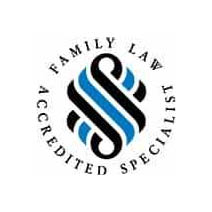As conveyancers, our main task is usually to make sure your property purchase goes through smoothly and on time. But some – just sometimes – our duty of care means we’d rather the sale never happened. Let’s look at an actual case we handled recently, which highlights some risks of buying strata title property.
The opportunity
Our client had spotted what he thought was an opportunity in Ryde.
Many owners of a relatively new strata building were selling. These where the original owners, who had bought off the plan and were locked in. Unfortunately for them, the building had massive defects. So they were trying to sell, and were offering units at literally half the original off-the-plan price.
That low offer price was what attracted our client in the first place. The prices were spectacularly low for the suburb.
Investigating red flags
Of course that raised suspicions. You know the old saying – if it looks too good to be true, it usually is.
The client found out a lot of information simply by researching online. He found the companies involved in the building and he researched them. He was aware of the issues, but he was confident they could be fixed. He had the money to pay for the unit, plus funds to invest in fixing issues and he wanted to go ahead. He also had a strata report which the selling agent had provided to him. So he entered into a contract. The contract had a cooling-off period, but it also said quite clearly that the purchaser accepted the building ‘as is’, with no further recourse.
He shared with us all the information he found online, plus the strata report.
The online information had already made us nervous. The strata report was worse.
The importance of the strata report
It wasn’t a full strata report. It was just a Word document with a few figures on it. There was no information about who had created it, who was responsible for it. We advised our client to get a real strata report. One with all the relevant information such as
- The financial position of the strata, including annual income from strata levies and the annual budget
- Minutes of meetings, including the annual general meeting
- A building defects report if one exists – with information about all the defects
- Any litigation – whether it’s the strata suing someone, or someone suing the strata
Once we saw that report, we had a clearer picture of the issues.
The biggest issue was that the building did not comply with Australian fire safety regulations. There were indications that Council was likely to declare the building uninhabitable. That meant our client (or his tenants) might have to evacuate at any time, with no notice.
In addition, everyone was suing each other. This kind of litigation generally goes on for years. It may never be resolved. In the meantime, you’re living in the property, or renting it out and dealing with it. In the worst-case scenario, you can paying for it but not living in it or renting it out since Council have declared it uninhabitable. It’s an ongoing stress.
We flagged this to our client.
Recognising the full risks
His first reaction was to find a way to work it out. As mentioned already, he felt he had the money to cover a special levy and get problems fixed. We had a long Zoom conference with him and the strata inspector and went over the issues:
- Retrofitting the fire safety would be a complex and expensive task, since the space to install sprinklers and exit signs didn’t exist.
- Even if he had the money to get the problem fixed, that didn’t mean every other owner had funds.
- Even if all the owners had funds, they might not be willing to pay until the litigation was over, which could take years.
- During all that time, there was a high risk that the Council would require evacuation – leaving everyone with massive debt and no place to live.
Once he fully understood the gravity of the situation, our client exited the contract under the cooling off period. It was a hard decision for him to make. It cost him 0.25% of the purchase price, plus the cost of his searches and his fees. Even so, it was a far better deal than being sucked into a mortgage and litigation without a real estate asset he could live in or rent.
While this story is an extreme example, research from the Office of the Building Commissioner and Strata Community Association NSW has found nearly two in five strata buildings have serious defects. It’s certainly enough to make you think twice about buying strata title property – but if you’re looking in certain suburbs or buying your first home, you may not have many options. In this case, it’s important to have a good conveyancer or other property professional on your side. Someone with experience, who knows what to look for and how to look after your interests.






